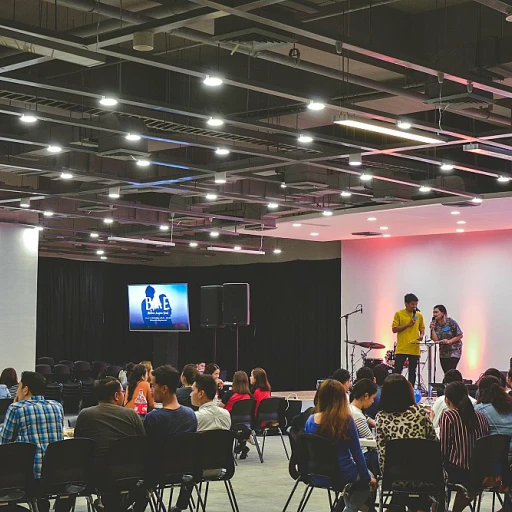
Understanding A1 Staffing Standards
Comprehending the Essential Standards in Staffing
In the realm of candidate sourcing, understanding A1 staffing standards is crucial to ensure quality care and patient safety across various sectors, notably in health care and nursing homes. High-quality care nursing relies significantly on maintaining appropriate nurse staffing levels. For instance, nurse-patient ratios are a key aspect when hospitals and nursing staff aim to elevate their service standards. The American health care sector is continuously spotlighting the need for balanced staffing ratios. Reports frequently highlight how adequate staffing levels, particularly in states like California, result in improved patient outcomes. In this region, efforts such as those spearheaded by organizations like AWHONN have been pivotal in establishing and advocating guidelines for safe staffing that influences care standards across the U.S. Furthermore, the adaptation of staffing guidelines based on empirical data—often highlighted by comprehensive studies—affects overall health outcomes significantly, including those within nursing care environments and hospitals. Whether it is about defining the nuance in nurse staffing or understanding the complexities of staff ratios, a well-rounded grasp of these standards forms the foundation of quality care. Implementing these standards is not only about meeting regulations but involves contributions from different stakeholders including staffing committees. These committees play a crucial role in devising strategies and making decisions pertinent to nurse patient ratios and other staffing levels. Key initiatives, like those in San Francisco, demonstrate that consistent application of high staffing standards directly correlates with qualitative improvements in both patient care and nursing care experiences. As we delve deeper into the role of technology and strategies that shape modern candidate sourcing, it's critical to bear in mind these foundational standards. Notably, understanding these essentials can guide you in launching your own staffing agency that aligns with the legal and ethical standards expected in the industry.The Role of Technology in Modern Candidate Sourcing
Transformative Influence of Technology in Candidate Sourcing
The integration of technology into candidate sourcing is revolutionizing the staffing industry, especially in sectors like health care where staffing standards hold immense importance. Utilizing technology has become essential for modern staffing methods, ensuring hospitals and nursing homes achieve consistent quality care. This is vital given the direct impact that staffing levels and health care standards have on nurse-patient ratios. Technologies such as Artificial Intelligence (AI) and machine learning facilitate improved decision-making processes, helping organizations adhere to staffing guidelines. These technologies are instrumental in identifying candidates whose skills align closely with the required standards of care nursing and nurse staffing, particularly in states like California, where the state imposes strict nurse staffing regulations. Through advanced algorithms, tech tools enhance the efficiency of rostering systems, helping maintain safe staffing levels in hospitals and other health care settings. For many health care institutions, balancing nurse patient ratios is a complex challenge. Implementing staffing software enables real-time tracking of staffing ratios and generates reports that provide insights into the effectiveness of staffing committees. These reports help assure compliance with professional standards, such as those advocated by AWHONN, and facilitate adjustments to staffing needs as patient care demand fluctuates. Technology's role in candidate sourcing is not only about meeting existing staffing needs but also in innovatively approaching future staffing challenges. The merging of technology and staffing has paved the way for a new era of recruitment processes, and those in management roles must stay informed about emerging trends. For further exploration of tech's impact on recruitment, see how agencies are creating opportunities for medical assistant jobs, demonstrating the scope of possibilities within the health care staffing realm. The influence of technology, when applied effectively, is a game-changer in achieving and maintaining high staffing standards within the nursing industry, ensuring quality care and compliance with established health guidelines. As health care environments become increasingly complex, the strategic use of technology is more critical than ever in delivering optimal patient ratios and staffing quality.Strategies for Effective Candidate Sourcing
Exploring Techniques to Enhance Recruitment
In the realm of candidate sourcing, discovering effective strategies is crucial for maintaining high staffing standards across various sectors, including health care. Staffing in environments like hospitals, nursing homes, and other health care facilities demands a delicate balance. The stakes are high, as nurse staffing levels and patient ratios can directly impact patient care and overall quality. Implementing sound strategies for candidate sourcing helps ensure that nurse staffing aligns with established staffing guidelines. Here's a look at some approaches that can elevate recruitment outcomes:- Data Analytics in Recruitment: Leveraging data analytics allows health care organizations to identify trends and gaps in their staffing processes. Analytical tools can provide insights into which staffing standards result in better nursing care and patient outcomes.
- Enhanced Candidate Assessments: Assessment tools that evaluate both technical skills and cultural fit can streamline candidate sourcing. These tools ensure that the nurses recruited not only possess the necessary skills but also align with the organization's care principles.
- Networking and Community Engagement: Engaging with nursing schools, professional bodies like AWHONN, and community groups can open up new channels for sourcing capable nursing staff. These networks often provide a pool of candidates who are committed to healthcare excellence.
- Technology Integration: Incorporating technology, such as AI and machine learning, can revolutionize staffing methodologies. These technologies can help organizations sift through numerous applications to identify candidates who meet exacting standards quickly and effectively.
- Focus on Candidate Experience: Ensuring a smooth candidate experience is crucial. For thorough insights, you can explore comprehensive resources on the phone screen interview process, which is often the first point of contact in the candidate journey.
Challenges in Maintaining High Staffing Standards
Addressing the Complexities of Staffing Levels
Ensuring high staffing standards, especially in sectors such as health care, is an undertaking fraught with challenges. Staffing ratios in settings like hospitals and nursing homes can directly influence the quality of care provided. For instance, nurse staffing levels are pivotal in maintaining safe staffing and delivering quality care. The intricate balance of nurse-patient ratios is not just a number game. In states like California, legislation mandates specific staffing guidelines to enhance patient care outcomes. Yet, despite regulations, some facilities struggle to maintain these staffing ratios, affecting both nurse welfare and patient health. Several studies underscore the correlation between staffing levels and care nursing quality. Inadequate nursing staff can lead to escalated risks of patient neglect and adverse health events. A report from AWHONN suggests that appropriate nurse staffing contributes to better patient ratios and reduces the incidence of negative care outcomes. While standards are vital, the challenges in meeting these guidelines can't be overlooked. Many hospitals face financial constraints that limit their ability to hire sufficient staff, affecting both direct care and overall patient health. Moreover, regions with high demand but fewer trained nurses, like certain parts of the United States, exacerbate these staffing dilemmas. To mitigate these challenges, some health care facilities have turned to staffing committees. These committees work towards ensuring that staffing levels remain within the recommended guidelines, promoting both quality care and sustainable nurse workloads. However, reaching and sustaining these standards requires continuous evaluation and adaptability amidst ever-changing care demands.Maintaining optimal staffing standards remains a daunting task, especially amidst economic pressures. Yet, embracing innovative strategies and understanding the integral role of every staff member can foster an environment where both nurses and patients thrive.
The Importance of Candidate Experience
The Human Element in Candidate Sourcing
In the evolving landscape of staffing, ensuring a positive candidate experience remains paramount. Effective candidate sourcing isn’t merely about matching qualifications to job requirements; it’s about nurturing the human connection that lies at the heart of health care settings, especially in roles involving direct patient care, like nursing. Maintaining a high standard of candidate experience directly influences the quality of hires in sensitive industries such as nurse staffing. In hospitals and nursing homes, where nurse-to-patient ratios play a critical role in delivering quality care, a positive candidate experience is not just a nice-to-have; it's a strategic imperative.- Tailoring the Approach: Recognizing that each candidate is unique, staffing agencies and hospitals should aim to personalize interactions throughout the recruitment process. This involves understanding the specific motivations of candidates, whether they’re drawn to provide care in states known for stringent standards like California, or looking to join renowned health care institutions.
- Transparency and Communication: Clear communication regarding staffing levels and patient ratios, as dictated by state guidelines or bodies like AWHONN, can set realistic expectations for potential recruits. Transparent dialogue helps in aligning the expectations of nurse staffing with the realities of nursing care demands.
- Feedback and Development: Providing consistent feedback during the recruitment phases enhances candidate trust and engagement. Moreover, offering insights into potential career development within the care nursing sector not only attracts but retains the best talent, ensuring effective nurse-patient ratios in staffing
Future Trends in Candidate Sourcing
Emerging Trends in Candidate Sourcing
The landscape of candidate sourcing is continuously evolving, influenced by technological advancements and shifting industry needs. As we look to the future, several trends are poised to redefine how staffing standards are maintained, particularly in sectors like healthcare where nurse staffing and patient care are critical.
Data-Driven Staffing Decisions
In the coming years, the integration of data analytics will become increasingly pivotal. Hospitals and nursing homes are leveraging data to optimize staffing ratios, ensuring that nurse-patient ratios meet the standards set by organizations like AWHONN. This data-driven approach not only enhances the quality of care nursing staff can provide but also helps in maintaining safe staffing levels across states.
Technological Innovations in Recruitment
Technology continues to play a crucial role in modern candidate sourcing. From AI-driven recruitment platforms to advanced applicant tracking systems, these tools are streamlining the hiring process. They enable healthcare facilities to efficiently source qualified nurses, ensuring that staffing standards are met and quality care is delivered consistently.
Focus on Candidate Experience
As discussed earlier, the candidate experience is becoming a focal point in staffing strategies. Future trends indicate a shift towards more personalized recruitment processes, where candidates are engaged through tailored communication and transparent hiring practices. This approach not only attracts top talent but also enhances the overall reputation of healthcare institutions.
Regulatory Changes and Staffing Guidelines
Regulatory bodies are increasingly focusing on staffing guidelines to ensure quality care. For instance, states like California have implemented specific nurse staffing ratios to improve patient outcomes. As more states adopt similar measures, hospitals and care facilities will need to adapt their staffing strategies to comply with these regulations.
Collaborative Staffing Models
Staffing committees are exploring collaborative models that involve direct care staff in decision-making processes. This participatory approach not only empowers nursing staff but also leads to more effective staffing solutions that align with both patient needs and organizational goals.
In conclusion, the future of candidate sourcing in healthcare is set to be shaped by a combination of technological innovation, data-driven strategies, and regulatory changes. By staying ahead of these trends, healthcare providers can ensure they maintain high staffing standards and continue to deliver exceptional patient care.












